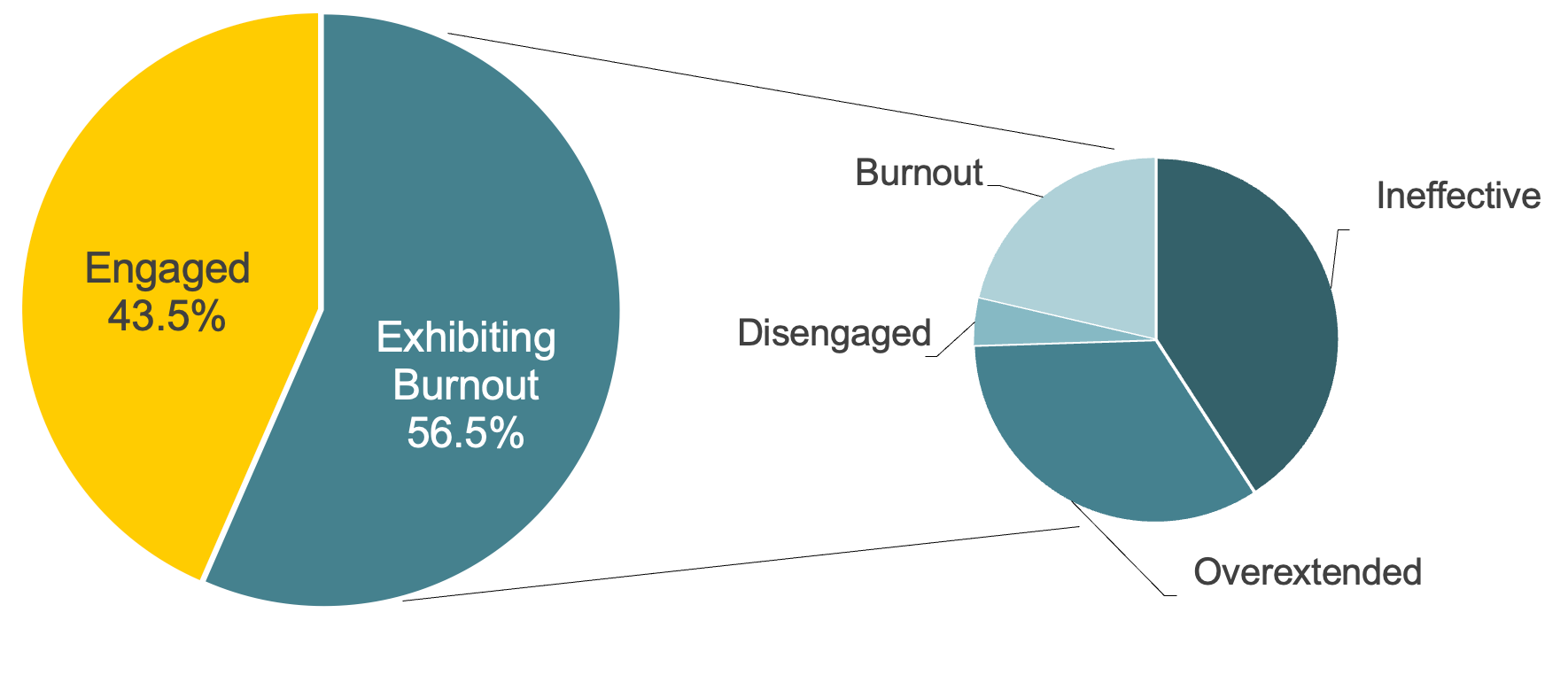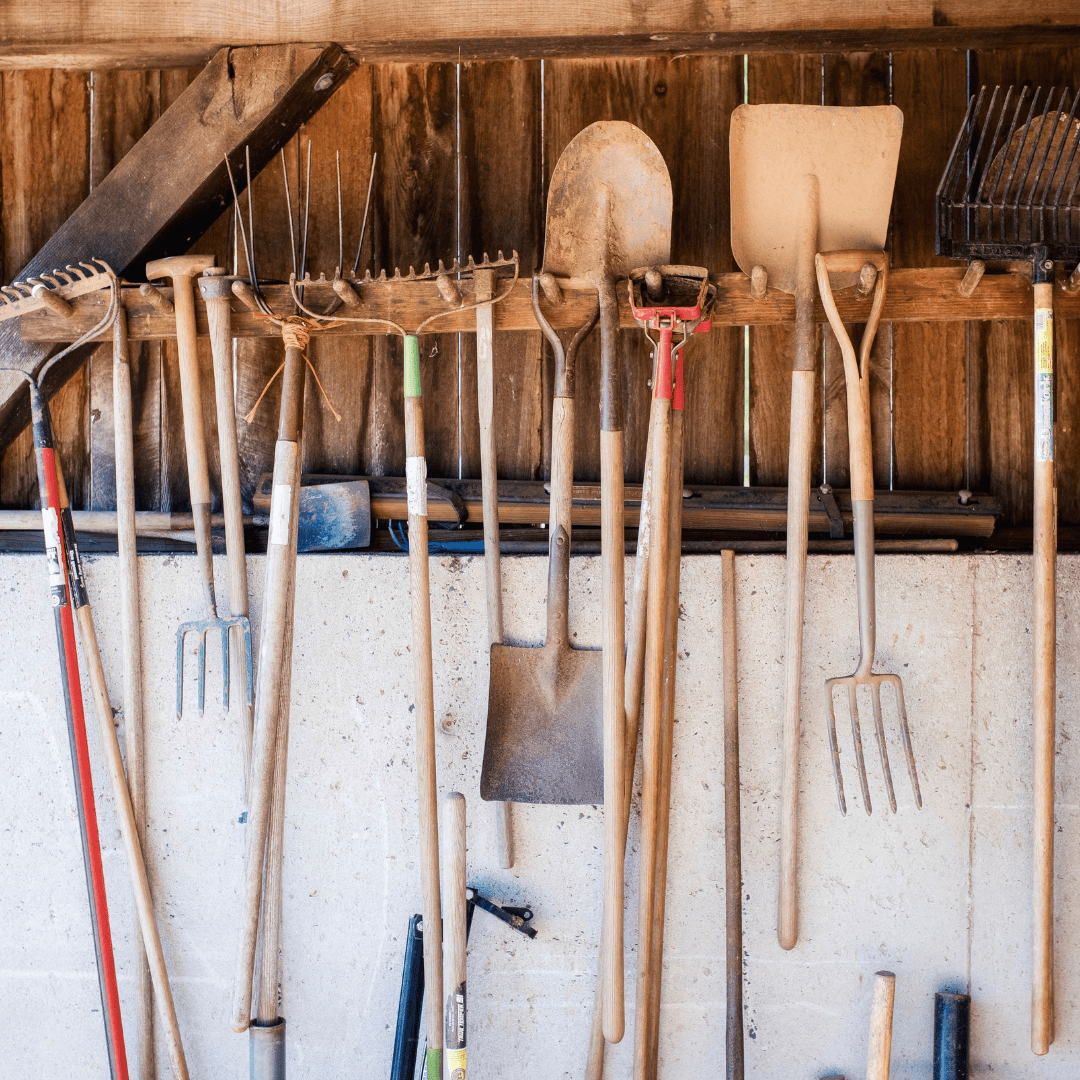“Never make any decisions about the farm in August.”
Ash Hobson-Carr, Hazel Witch Farm, Mechanicsville, VA
Let’s talk burnout, friends.
We’ve all been there: whether it hits you in August – when the days are long, your body is tired, and you feel like hanging up your shears – or it hits you in November – when you’ve powered through your season on coffee and dreams of colder days to come, wondering if you’re really going to be able to do this all over again next year.
You are not alone in this feeling – even the most experienced and driven among us land in this headspace. A 2019 Canadian study of more than 1,000 small farms examined the three components of burnout (exhaustion, cynicism, and professional efficacy) among its farmers, and 57% of respondents fell somewhere in the measurable spectrum of burnout. So, you are most definitely not alone.
Profile of a Farmer: Burnout in Canada

There are two important questions to ask when it comes to this feeling and its impact on your business:
- How do I recover from burnout?
- How do I prevent burnout in the future?
How do I recover from burnout?
Acknowledging it is the first step. Now let’s look at a couple of ways to begin to recover:
1. Rest
You will never realize just how much you needed rest until you are rested. “But I don’t have TIME to rest,” said everyone with burnout, ever. We know the feeling, but the reality is that you don’t have time to not rest.
You will be more productive, more efficient, and more resilient when you are rested, so the sooner you create space for rest, the sooner you will be back to your old self. If you absolutely cannot pull yourself away for rest, then make a plan for a day or time when you can – and stick to it! A few things to keep in mind:
Rest looks different for everyone.
Strategies: For some, rest means a vigorous cardio workout; for others, it may mean sitting quietly with a book or magazine. For some, rest is a weekend away, and for others, it may be taking back 30 minutes each day for some dedicated work-free time.
The important thing to recognize is that in order to continue operating a sustainable business over the long-term, you need to carve out this time for yourself. You are making a healthy decision for your business, your family and friends, and yourself.
Disconnecting is critical
It is not rest if you are actively working. If you’re scrolling social media, answering emails, or brainstorming solutions to challenges within your business, then you are not resting.
Strategy: Set aside time when you can completely disconnect from your phone/computer/colleagues in order to allow your mind time to completely disconnect from your work. Disconnecting is what allows your mind the space to reset, and ultimately come back ready to perform at your best.
Rest is not selfish
This is a myth, friends! Rest is what allows you to refuel; you wouldn’t expect your delivery van to run for eternity without giving it some juice – your mind and body work the same way. You are going to show up stronger and with greater presence for everyone in your life if you are feeling energized. You cannot fill others’ cups if you are running on empty – a very unselfish deed, indeed.
Strategy: Reframe your mindset about rest; if it helps, consider it an investment in building a more resilient version of yourself for the benefit of your friends, family, and business.
2. Reconnect with what you love
This may be something in your work that sparks joy – maybe you fell in love with floral design and just don’t have the time for it right now – or it could be something entirely unrelated to your work – maybe you are an extrovert who has been isolated at work and need to reconnect with friends.
Strategy: Reconnecting with what you love could mean people, hobbies, or places. What brings you joy and energizes you is going to look different for everyone; consider the activities, hobbies, friends, places, etc. that have helped to lighten you in this way in the past, and make a plan to weave them into your life. Tip: including these in your daily life in an ongoing way can help you to stave off burnout in the future, too!
How do I prevent burnout in the future?
After you’ve started working through your burnout, the next step is to make a plan to prevent or minimize it in the future. There are a number of strategies to preventing burnout; the solution that is right for you is likely a combination of these and more, and it will look slightly different for everyone.
3. Set Boundaries
Many of us live in our place of work – your farm is an extension of your home, so physical separation can be a challenge. However, it’s vital to create some sense of boundaries because as psychologist Evan Bick, noted “it’s just not possible to fulfill the fantasy of being 100% committed to work, 100% committed to friends and family, and 100% committed to taking care of ourselves” simultaneously.
While many of these lines will inevitably blur in a home-based business, it is important to remember that this constant blurring of boundaries and lines can also be a slippery slope toward burnout.
Strategy: Look for ways to segment your time or your place of work. Evan reminds us that “one of the benefits of drawing effective boundaries is that it allows you to be fully present in what you’re doing in the moment. If you’re spending time with your family, for example, and notice your attention wandering back to unfinished work tasks, gently remind yourself to focus on what’s happening in front of you. Ask yourself:
Are there areas of your home that can be off-limits for work?
Are there times of day that you can shift gears out of work and into family time or dedicated quiet time? Are you able to take 30 minutes of quiet time for yourself before you start the day?
Do you have (or need) limits set for your social media or device use?
4. Prioritize
There is a difference between urgency and importance; some tasks are both important and urgent, and some are not. Running a business is a marathon, not a sprint. Not everything needs to be completed today.
Strategy: Lists can be an extremely helpful way to organize your thoughts and tasks, and to help you sort out which of these are urgent and important (high priority), and which are important, but less urgent (lower priority). If you are still unsure about a particular task, try using a what-if question for tasks that you are unsure about with regard to urgency (e.g. “what if I wait to do this until tomorrow? Or next week?).
Consider making daily or weekly lists for yourself, and utilizing calendar reminders (either on your phone, written on a paper or whiteboard calendar) for tasks that are not urgent and can be done at a later date. If you have a tendency to wake up overnight remembering things, keep a notepad by your bed to record these reminders. Writing tasks or thoughts down on paper removes the mental load of remembering these items, while still letting you keep track of – and plan for – your urgent (and not-so-urgent!) to-dos.
5. Beware of Multitasking!
Multitasking is often an unavoidable reality of wearing many hats, but there are many times where it actually slows us down (gasp!).
Certain types of multitasking – scheduling phone calls while you are harvesting, or listening to podcasts while processing product – can be both efficient and effective; but others can end up slowing you down (e.g., trying to train a new employee on an unrelated skill while also checking your harvest list), and yield poorer results all around – often even leading to repetition of the tasks at hand.
Strategy: Be honest with yourself about where you feel able to effectively multitask, and where there are areas in which you would be more efficient if you are fully present. For those tasks that require singular focus – writing proposals, sorting orders, operating heavy machinery – consider how to best segment your time to allow for dedicated attention and staying on task.
If possible, physically separating yourself from possible distractions is ideal. If physical separation is not possible, try letting those around you know that you are available if something urgent comes up, but otherwise are focused on [insert task here] for the next [X minutes/hours]. A less direct approach is to don visible headphones/earbuds; even if you aren’t listening to anything, they can send a signal to those around you that you are trying to focus!
6. Be Ruthless about Your Value-Add
Value-add work is work that adds value to your business. Growing more product adds value (increased supply) to your business. Visiting buyers adds value (quality time, relationship building).
Your value-add is value-add work that only you can and should be doing, and could not be effectively automated or outsourced to someone else. Remember: your time has value. You have a finite number of hours in each day, and how you choose to spend them will drive outcomes in your business and in your personal life. You’ve heard it before: work smarter, not harder. Now it’s time to apply this principle to your own business.
Consider the following scenario described by Brie Quinn & Brendan Cullinane of Fairlane Farm in Maine: notes are written by hand in the field, transcribed into a Google sheets document, and sent to a wholesale client list to notify them of availability. As order and product inquiries happen throughout the day via phone and email, the Google Sheet needs to be manually updated to accurately reflect availability. Repeat this process 2-3 times a week.
Does this process sound familiar? Where is Brie and Brendan’s value-add in this scenario? Are there any steps in this workflow that could be reduced or eliminated? Take a few moments to complete this exercise for your own business:
What are the areas of your work that you absolutely have to do? What can be outsourced?
Which are the areas of your work that spark joy for you? Which are the areas that drain you?
Where do you spend the majority of your time in the off-season? Where do you spend it during production season? Do these tasks align with your answers to the above questions?
If you had more time/labor/resources/help, where would you ideally like to be spending your time in your work or personal life?
Strategy: When you reflect on your answers to the questions above, remember that your time has value. Time spent on unnecessary, or non-value-add tasks is time that you cannot spend on the other areas of your business and personal life. Identifying and reducing or eliminating these non-value-add tasks is a key step in growing your business and making it more sustainable over the long-run.
If you had extra time each week, would you spend it growing more product (value-add)? Harvesting and selling more (value-add)? Meeting new buyers (value-add)? Enjoying time with your kiddos or partner (most definitely value-add!)? The possibilities are endless!
Brie and Brendan track their hours and workflows carefully, and found that after joining Rooted, they estimate saving 6 hours a week! That’s almost a full workday EVERY WEEK! Between inventory management, order logistics, customer management and, growers who switch from Google Sheets, Shopify, text, or DM-based sales are reclaiming their time. Learn more about how the Rooted platform can help you spend more time on your value-add work here.
“Rooted has given us a tool which has had a significant effect on our operation. It dramatically increases our efficiency in making and executing sales. That efficiency gives us the time needed to focus on production and opens a channel to scalability and profitability that would not have otherwise existed.” - Brendan Cullinane & Brie Quinn, Fairlane Farm
For a more in-depth look at the mental-health implications of burnout and strategies for setting up healthy work habits, take a look at our discussion on mental health for farmers with Psychologist Evan Bick.
Categories

About the Author
Rooted Farmers
The Rooted Farmers Team is happy to bring you content that we hope provides value. The topics covered range from farming and running a hub, to sales, marketing, and all things related to building your business, to the unique challenges faced by growers. Our philosophy in sharing this content is that we are always in a position to learn; embracing this mentality will only help us to grow, both within our businesses and personally. If there is a topic that you feel would be of value to the Rooted Farmers community, we encourage you to share your ideas with us by sending an email to: reachout@rootedfarmers.com
